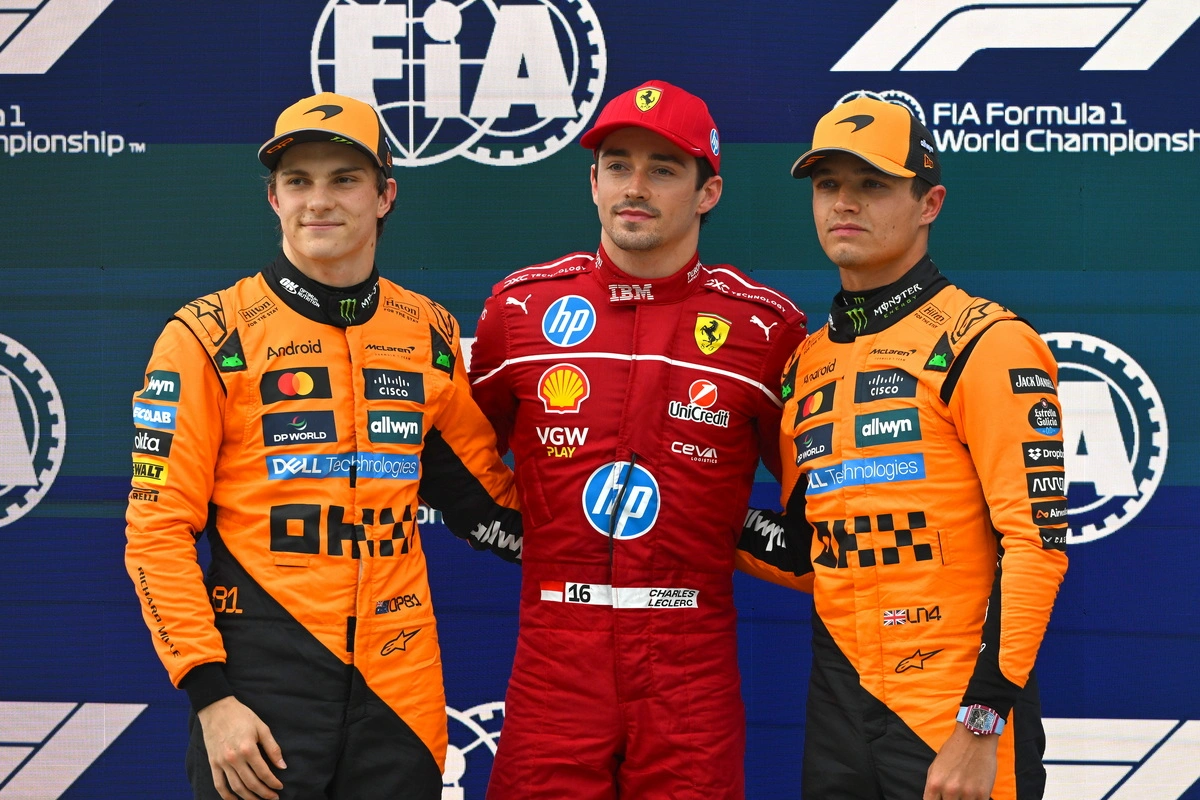The Hungarian Grand Prix, often a crucible for Formula 1`s finest, delivered its share of drama, but for Ferrari and Charles Leclerc, it served up a particularly bitter pill. What began with the promise of pole position rapidly devolved into a frustrating fourth-place finish, leaving experts and fans alike scratching their heads over a performance dip so radical it turned Leclerc`s SF-25 into an “undriveable” beast. Welcome, once again, to the perennial Ferrari conundrum.
The Tire Tango: A Calculated Gamble Gone Wrong?
At the heart of Leclerc’s sudden decline lay the tires. Specifically, the final set mounted during his last stint. Reports from the paddock, corroborated by technical analysis, point to an
The prevailing theory suggests this elevated pressure was a deliberate, albeit misguided, strategy. Given the unusually cool ambient and track temperatures on race day – a stark contrast to the typically scorching Hungaroring summer – Ferrari engineers may have opted for higher initial pressures to accelerate the tires` warming-up process. The goal was to get them into their performance sweet spot faster. It`s a calculated gamble, perhaps, that backfired spectacularly. Adding insult to injury, the intense heat transferred from the brake ducts to the rims likely compounded the issue, driving the internal tire pressure even higher, well beyond any sane operational limit.
The Suspension Saga: A Familiar Flaw Re-Emerges?
Yet, a second, more concerning, narrative has emerged from the technical discussions. This hypothesis also revolves around inflated tire pressures, but with a more fundamental and unsettling root cause: the car’s underbody. Formula 1 cars ride incredibly low to the ground, and their performance is intrinsically linked to maintaining a precise ride height. The *plank*, a sacrificial element on the underside of the car, is constantly monitored to ensure it doesn`t wear beyond a stipulated limit, as excessive wear can lead to disqualification (a painful lesson Ferrari learned firsthand in China).
The unsettling theory posits that Ferrari might have deliberately chosen higher tire pressures in the final stint to elevate the car’s ride height, thereby protecting the plank from excessive wear. If true, this would represent a frustrating irony, implying a failure of the rear suspension modification introduced at Spa. This upgrade was specifically designed to allow the team to run aggressive, low-to-the-ground setups without incurring illegal plank wear. To then deliberately compromise tire performance to mitigate this very issue would suggest a critical misstep in fundamental car design or development.

The Perfect Storm: When Two Theories Collide
While both theories offer plausible explanations, the consensus leans towards a combination of factors – a true “perfect storm” that shipwrecked Leclerc`s race. The team`s attempt to fast-track tire warming in cooler conditions, combined with the unintended consequences of brake-generated heat and a potential underlying fragility in the suspension`s ability to maintain optimal ride height, created an unholy alliance that rendered the SF-25 a handful.
Leclerc himself, in the immediate aftermath, spoke cryptically of a “chassis problem” from the fortieth lap onwards. Team Principal Fred Vasseur quickly clarified that this referred to an issue unrelated to the power unit, hinting at aerodynamic or mechanical inconsistencies. This aligns perfectly with the dual tire and suspension theories, both of which would profoundly impact the car`s dynamic behavior and the driver`s ability to control it.
The Ferrari Fable: A Recurring Nightmare?
For the Tifosi, this incident is yet another chapter in a long, often frustrating, saga of unfulfilled potential. Ferrari, with its rich history and passionate fanbase, seems to possess an uncanny ability to snatch defeat from the jaws of victory due to operational errors, strategic misfires, or technical gremlins. The spectacle of a car plummeting from pole to midfield pace, ostensibly due to such elementary issues as tire pressure management or a suspension tweak that doesn`t quite deliver, fuels a deep-seated exasperation.
In the high-stakes, precision-driven world of Formula 1, where marginal gains dictate success, such fundamental miscalculations are magnified tenfold. The Hungarian GP was a stark reminder that even with a strong qualifying performance and a talented driver like Charles Leclerc, the intricate interplay of car, tires, strategy, and environmental conditions can quickly unravel the best-laid plans. As the season progresses, all eyes will remain on Maranello, waiting to see if they can truly diagnose and cure the ailments that continue to plague their championship aspirations, or if the “Ferrari conundrum” is simply a feature, not a bug, of their celebrated racing legacy.

